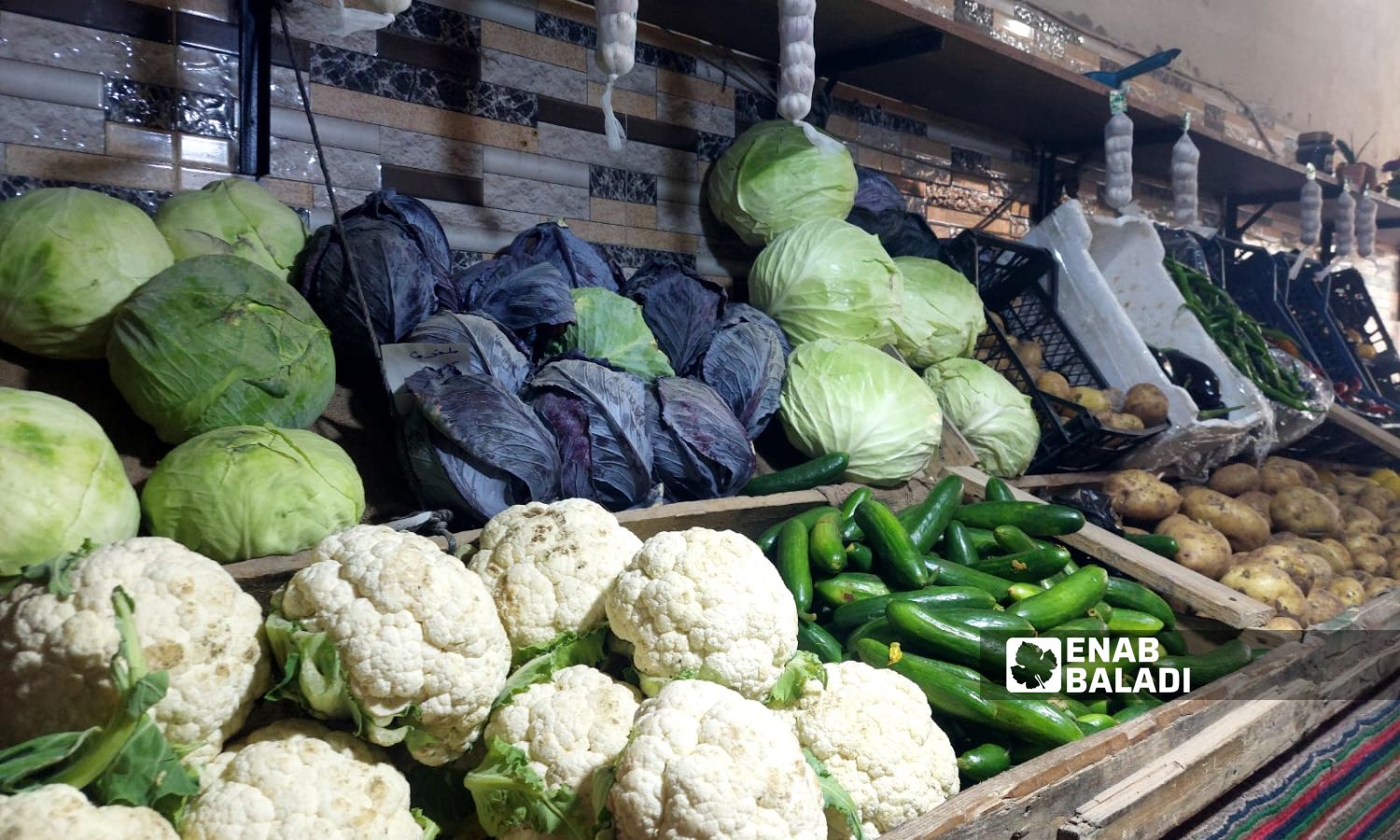



Enab Baladi – Dayan Junpaz
The markets of the city of Azaz in the northern countryside of Aleppo witnessed a noticeable rise in vegetable prices with the arrival of the month of Ramadan on March 11.
The rise in prices for some types of vegetables reached double compared to what they were in February.
Vegetable merchants met by Enab Baladi attribute the price increase to importation problems, pricing goods in US dollars by wholesale traders, monopolies, and increased demand during Ramadan.
Bashir Arraqi runs a vegetable shop in the city of Azaz and told Enab Baladi that the main reason behind the price hike is the monopoly of merchants and the lack of oversight, in addition to increased demand during the days of Ramadan.
He added that shop owners in the area are the first to lose. They suffer financial challenges due to what he described as “exorbitant” costs for commercial shop rents, electricity bills, and the costs of purchasing goods in US dollars and selling them to customers in Turkish currency.
The trader added that the increase included basic kinds of vegetables. For instance, the price of a kilogram of bell peppers rose to 80 Turkish liras after it had been priced at 40 liras, while the price of a kilogram of cucumbers recorded 40 liras after being 18 liras, and the price of a kilogram of zucchini reached 50 liras after being 30 Turkish liras.
Alaa Deeb, who also owns a vegetable shop, said that the price increase is due to external factors, such as currency market fluctuations and instability, in addition to the lack of self-sufficiency in local crops, and merchants relying on foreign imports.
He added that he purchases his wholesale goods from the al-Hal market in the city in US dollars, but he is forced to sell them to his customers in Turkish currency, which puts him at the risk of making a loss or profit.
Deeb told Enab Baladi that it has become difficult to accurately calculate prices, while he works daily to estimate his total profits and losses based on the exchange rate of the US dollar from one day to the next.
The exchange rate of the Turkish Lira against the dollar has been fluctuating for more than a year, with its price failing to stabilize for more than one month.
Deeb pointed out that market movement appears normal during Ramadan, but residents have limited their purchases to daily necessities due to their inability to buy large quantities of vegetables.
According to the Döviz website, specialized in exchange rates and currencies, the exchange rate of the US dollar reached more than 32 Turkish liras at the time of this report’s release.
In addition to rising exchange rates and product monopolies, Mohammed Othman, a vegetable merchant in Azaz’s al-Hal market, believes that the high prices are due to merchants mainly depending on imported vegetables, due to the unavailability of local crops.
He pointed out that Turkish customs duties, transport and offloading costs, play a significant role in the current product price increase.
Othman considers that some merchants exploit the increased demand at the beginning of Ramadan, despite the availability of quantities in the markets.
He indicated that prices are expected to drop in the next few days.
The economic situation and the day laborers in northwestern Syria are affected by the devaluation of the Turkish lira against the US dollar, as workers continue to receive low wages in Turkish liras, amid rising prices for all items in the city of Azaz.
Day laborers in northern Syria receive 100 Turkish liras at best (about three US dollars), which is a small amount against the list of needs, with the recognized poverty threshold reaching 10,843 Turkish liras and the extreme poverty line at 8,933 liras.
The general level of prices is experiencing almost daily increases, affecting essential goods and food, thus doubling the lack of purchasing power of residents.
Most Syrians resort to relying on more than one source of income in an attempt to balance income and expenses, with the most prominent of these sources being financial remittances from expatriates outside Syria and relying on secondary jobs. Meanwhile, families forgo essentials in their lives and cut back on their expenditure rates.
4.5 million people live in northwest Syria, of which 4.1 million need assistance, and 3.3 million of them suffer from food insecurity, 2.9 million of them are internally displaced, and two million live in camps, according to the United Nations, while local statistics claim that about 5.5 to 6 million people reside in the area.
if you think the article contain wrong information or you have additional details Send Correction